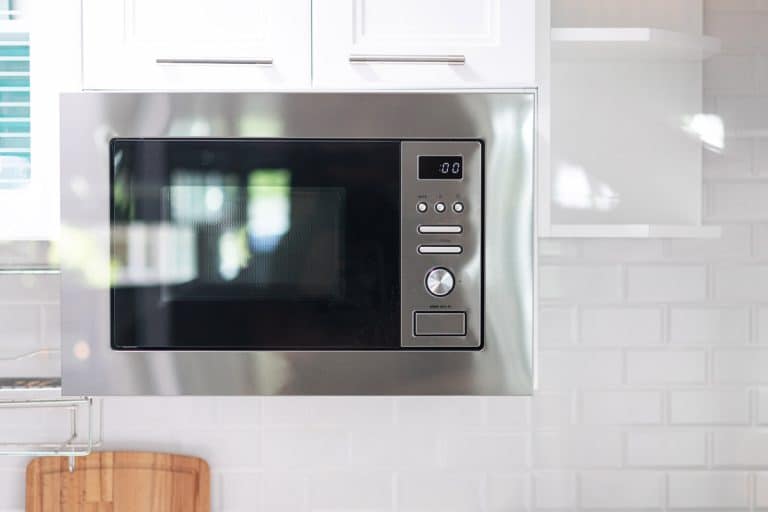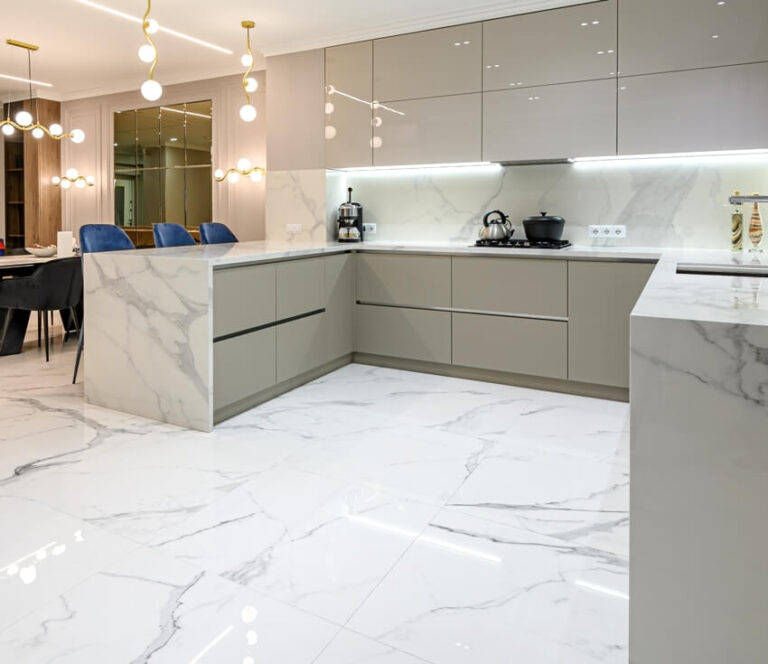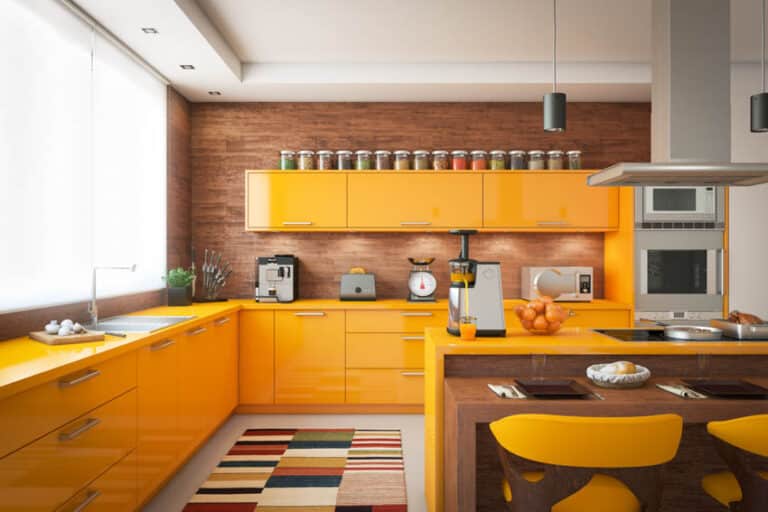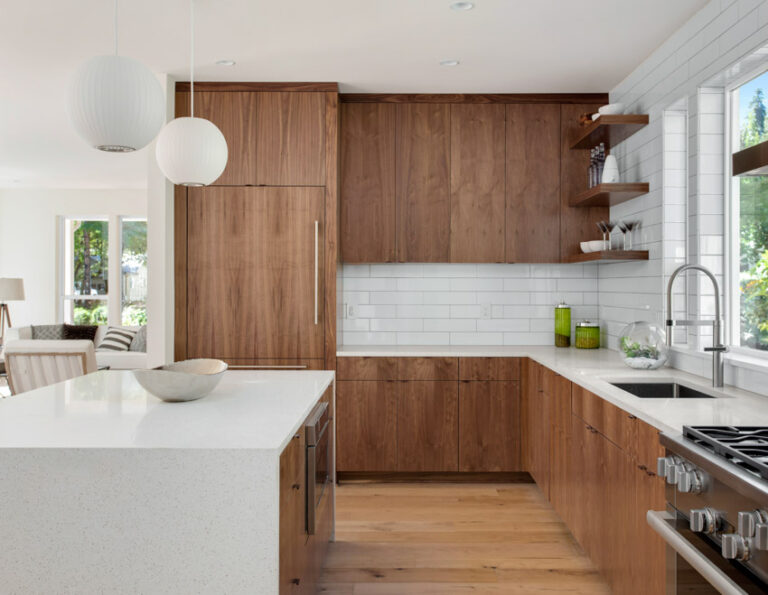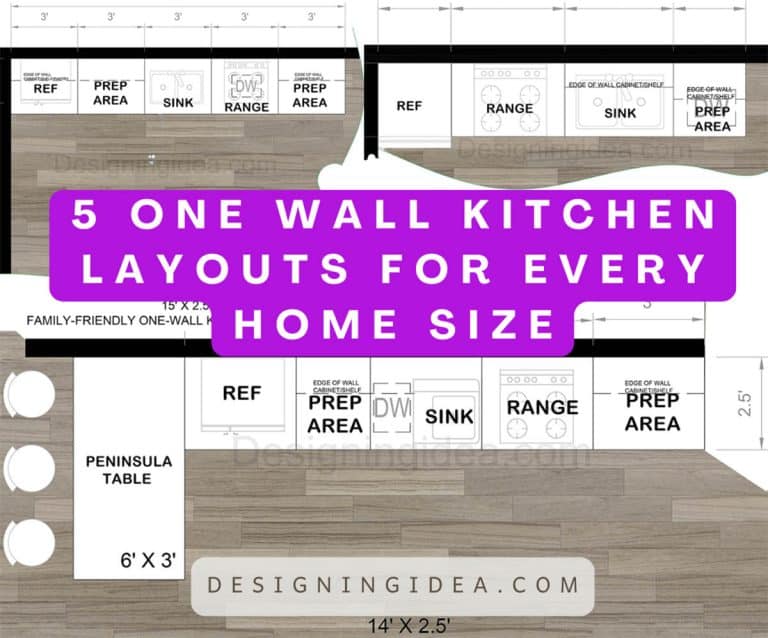Kitchen Mirror Backsplash Pros and Cons
When looking to change the appearance and enhance the value of a home, a mirror backsplash in the kitchen is a smart choice at the top of any home improvement list. As a way to add new personality, style, and energy to one of the most important rooms in the house, mirror backsplashes are a creative and enhancing addition.
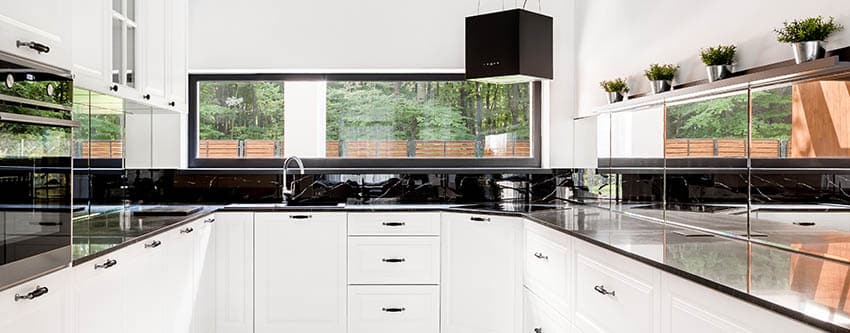
Design types of mirror backsplash range from traditional to the more modern and cutting edge. However, when choosing backsplashes, consider the design theme of the kitchen so the material adds to rather than detracts from the appearance of the room’s style.
Key Takeaways: Mirrored backsplashes enhance the brightness and space perception of a kitchen. They are easy to clean, and offer many design options such as different shapes, with their ability to serve as a customized focal point.
However, they require frequent upkeep to avoid smudges, can be delicate and more expensive to install and are not recommended for all styles or high-heat areas. Additionally, the constant reflection in the kitchen is not to everyone’s liking.
What is Mirror Tile Backsplash?
Kitchen backsplash has its humble beginning as a practical way to control stovetop spills and splashes making clean-up afterward easier. The original backsplashes covered only the wall behind cooking surfaces such as stoves and ovens. Backsplashes were often no more than 4-inches tall and made of materials such as various tiles, brick, or stone. See examples of 4 inch backsplash here.
Over time, backsplashes expanded to cover more surface areas including walls and cabinets. With the expansion, more thought was put into the look of the kitchens as well as the types of materials.
Mirror tiles became popular in kitchens in the ’70s and combine the benefits of splash control and surface material that adds light and dimension to the look of a design. They are not the typical mirror products you find in a bathroom. It often has a bit of a tint, either smoky or silvery, to give it character.
Mirror tiles are often safety glass treated and toughened to withstand heat from stoves and ovens. If broken, the tiles crumble into small pieces instead of turning into sharp, jagged shards. These modern tiles often come as a peel and stick backsplash that can make it easier to install.
Types of Mirror Tile Backsplash for the Kitchen
There are several types of mirror designs for homeowners to choose from. Depending upon the choice of style and design selected, they can change the look of the kitchen and open up the space. Here are some of the most popular choices today.
Antique
A design made with treated mirrors that are aged to look antique with vintage character. This creates a subtle and subdued look that reflects less light for a classic or traditional room feel.
Diagonal
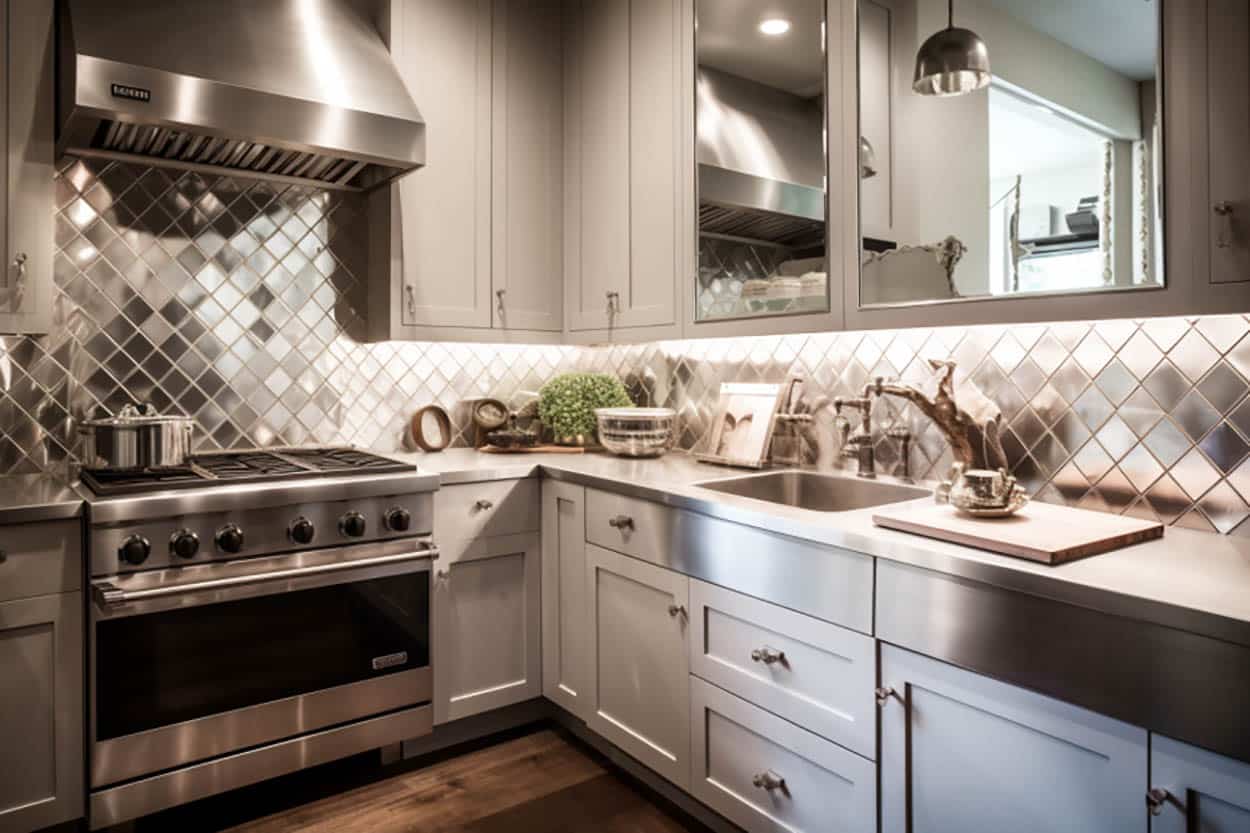
Another popular and classic look is to place these panels diagonally to create the wall’s backdrop. Small or large-sized tile gives additional options on the design and looks depending upon the shape and surface area of the layout.
Mosaic Tile
A mosaic design takes advantage of the small mirrors to create an intense and complex accent expression. This type combines tile design and placement for a modern look.
Subway Tile
A subway mirror tile, with its rectangle shape and beveled edges, attracts and draws attention focused on the unique design and display of the pattern. See more types of subway tile kitchen backsplash here. The desired design goal ultimately determines what type best serves the look of the kitchen. You may also consider metal kitchen backsplash for its reflectivity.
Mirror Tiles For Backsplash Pros
While there are many choices to consider for backsplash materials, mirror tile remains a top choice by design professionals and do-it-yourself homeowners for many reasons.
• The reflection enhances the perceived size of a kitchen while showcasing kitchen fixtures and appliances
• It increases the amount of reflected light and visibility from fixtures and natural light
• It highlights splash and stain visibility for easier cleanup
• It works as a protective surface that is resistant to spills, stains, and dirt
• Installing a kitchen tile backsplash is an easy do-it-yourself home project
Mirror Tiles For Backsplash Cons
Tiles made from mirrors reflect everything and could cause the look to be chaotic. There are a few other cons to consider as well.
• Surface splashes and spills become more visible and obvious, and can be reflected
• A tile not properly installed can lead to moisture weakening the tile adhesive and falling off
• Depending on the design, it may require sacrificing counterspace• It is less resistant to bangs, scrapes, and sharp edges
• It requires regular cleaning to maintain its look
Using mirrors in a kitchen is gaining popularity but may look different once it’s installed. When planning to use this material, it’s helpful to consider the size of the kitchen, how much light it gets, and if the counters have numerous appliances and cooking items on them.
Coming back into style, mirror tile splash guards and walls are a great refresher for any kitchen. Visit this page to see more pictures of kitchen backsplash designs.

